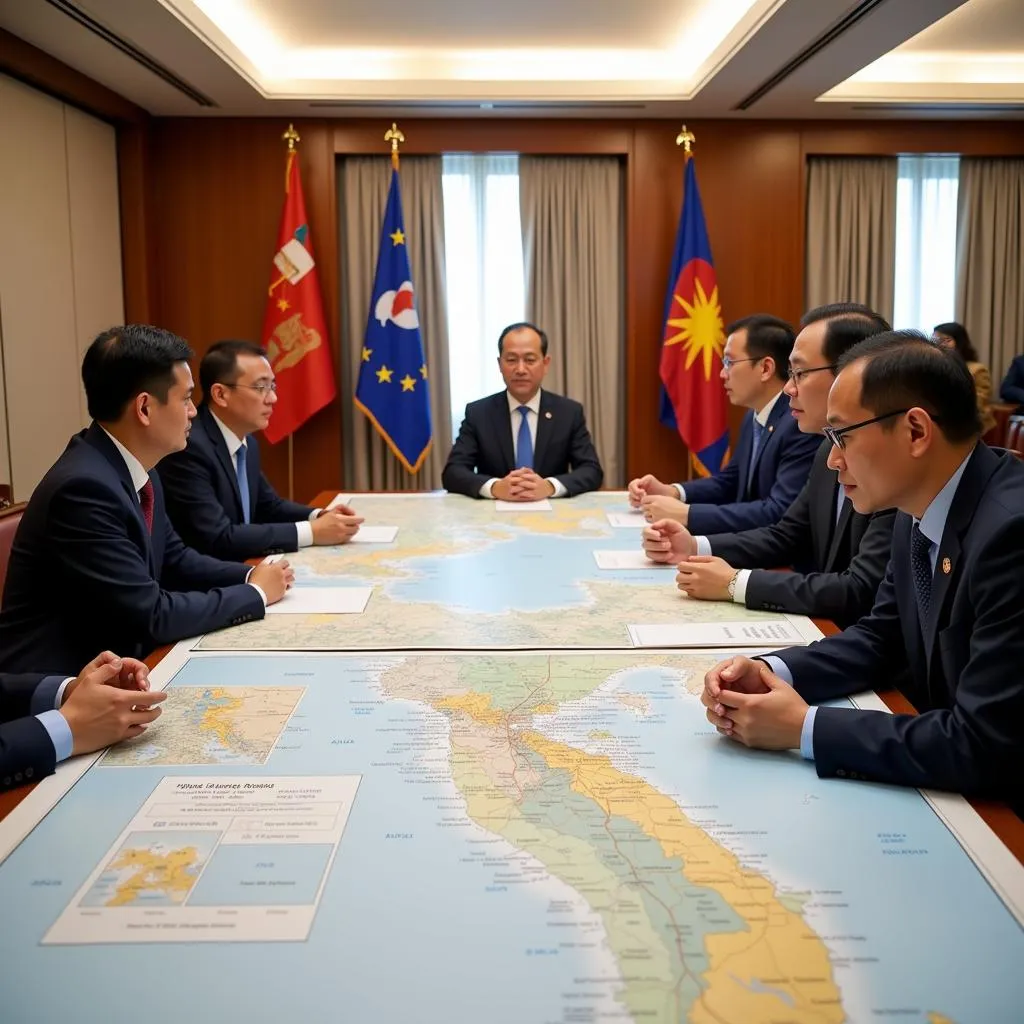ASEAN connecting surface and bulk refers to the multifaceted efforts of the Association of Southeast Asian Nations (ASEAN) to enhance connectivity within the region. This encompasses physical infrastructure development, harmonization of regulations, and facilitation of trade and people movement, all aimed at creating a seamless and integrated economic and social landscape.
The Multifaceted Approach to ASEAN Connectivity
ASEAN’s approach to connecting surface and bulk is not limited to physical infrastructure projects but extends to several key areas:
1. Infrastructure Development: Bridging the Gaps
A cornerstone of ASEAN’s connectivity vision is the development of robust and integrated infrastructure networks. This includes:
- Land Transport: Construction and upgrading of highways, railways, and bridges to facilitate cross-border trade and travel. Key initiatives include the ASEAN Highway Network and the Singapore-Kunming Rail Link.
- Sea Transport: Development of efficient port facilities, shipping routes, and logistics networks to enhance maritime connectivity and promote intra-ASEAN trade.
- Air Transport: Expansion and modernization of airports, harmonization of air traffic management systems, and liberalization of air services to improve air connectivity and tourism.
 ASEAN Highway Network map
ASEAN Highway Network map
2. Regulatory Harmonization: Streamlining Processes
Beyond physical infrastructure, ASEAN recognizes the critical role of regulatory harmonization in facilitating seamless connectivity. Key efforts include:
- Customs Cooperation: Simplifying and harmonizing customs procedures, implementing single-window inspection mechanisms, and promoting electronic data interchange to expedite cross-border trade.
- Transport Facilitation: Standardizing transport regulations, streamlining border crossing procedures, and developing interoperable transport systems to reduce transport costs and enhance efficiency.
- Trade Facilitation: Eliminating non-tariff barriers, harmonizing standards and regulations, and promoting trade facilitation measures to boost intra-ASEAN trade and investment.
3. Digital Connectivity: Bridging the Digital Divide
In the digital age, ASEAN is also prioritizing digital connectivity as a key enabler of economic growth and social progress. Key focus areas include:
- ICT Infrastructure: Expanding broadband internet access, developing secure and resilient digital infrastructure, and promoting the adoption of emerging technologies to bridge the digital divide within ASEAN.
- E-commerce: Developing a thriving regional e-commerce ecosystem by harmonizing regulations, promoting consumer trust, and facilitating cross-border payments to unlock the potential of the digital economy.
- Digital Skills Development: Equipping ASEAN’s workforce with the necessary digital skills and literacy to thrive in the digital economy and bridge the digital skills gap.
 People connecting digitally across ASEAN nations.
People connecting digitally across ASEAN nations.
The Significance of Connecting Surface and Bulk for ASEAN
The strategic emphasis on connecting surface and bulk is rooted in ASEAN’s vision of building a resilient, integrated, and globally connected region. Key benefits include:
- Economic Growth: Seamless connectivity promotes trade, investment, and tourism, driving economic growth and prosperity for all ASEAN Member States.
- Job Creation: Infrastructure development and the expansion of trade create employment opportunities across various sectors.
- Social Development: Improved connectivity enhances access to essential services, education, and healthcare, particularly in remote areas, fostering inclusive development.
- Regional Integration: Connectivity initiatives foster closer ties between ASEAN Member States, promoting a sense of community and shared progress.
- Global Competitiveness: A well-connected and integrated ASEAN strengthens the region’s position in the global economy, attracting foreign investment and enhancing competitiveness.
Challenges and Opportunities
While ASEAN has made significant progress in connecting surface and bulk, challenges remain. These include:
- Infrastructure Gaps: Financing the development of large-scale infrastructure projects remains a challenge, requiring innovative financing mechanisms and public-private partnerships.
- Regulatory Divergence: Despite harmonization efforts, differences in regulations and standards persist, hindering seamless connectivity.
- Non-Tariff Barriers: Addressing non-tariff barriers, such as cumbersome customs procedures and technical barriers to trade, is crucial to fully realize the benefits of connectivity.
 ASEAN leaders discussing regional connectivity.
ASEAN leaders discussing regional connectivity.
A Future Interconnected
ASEAN connecting surface and bulk is not merely about building roads, bridges, and digital networks; it’s about building a future where people, goods, and ideas can move seamlessly across borders, unlocking the vast potential of the region.

